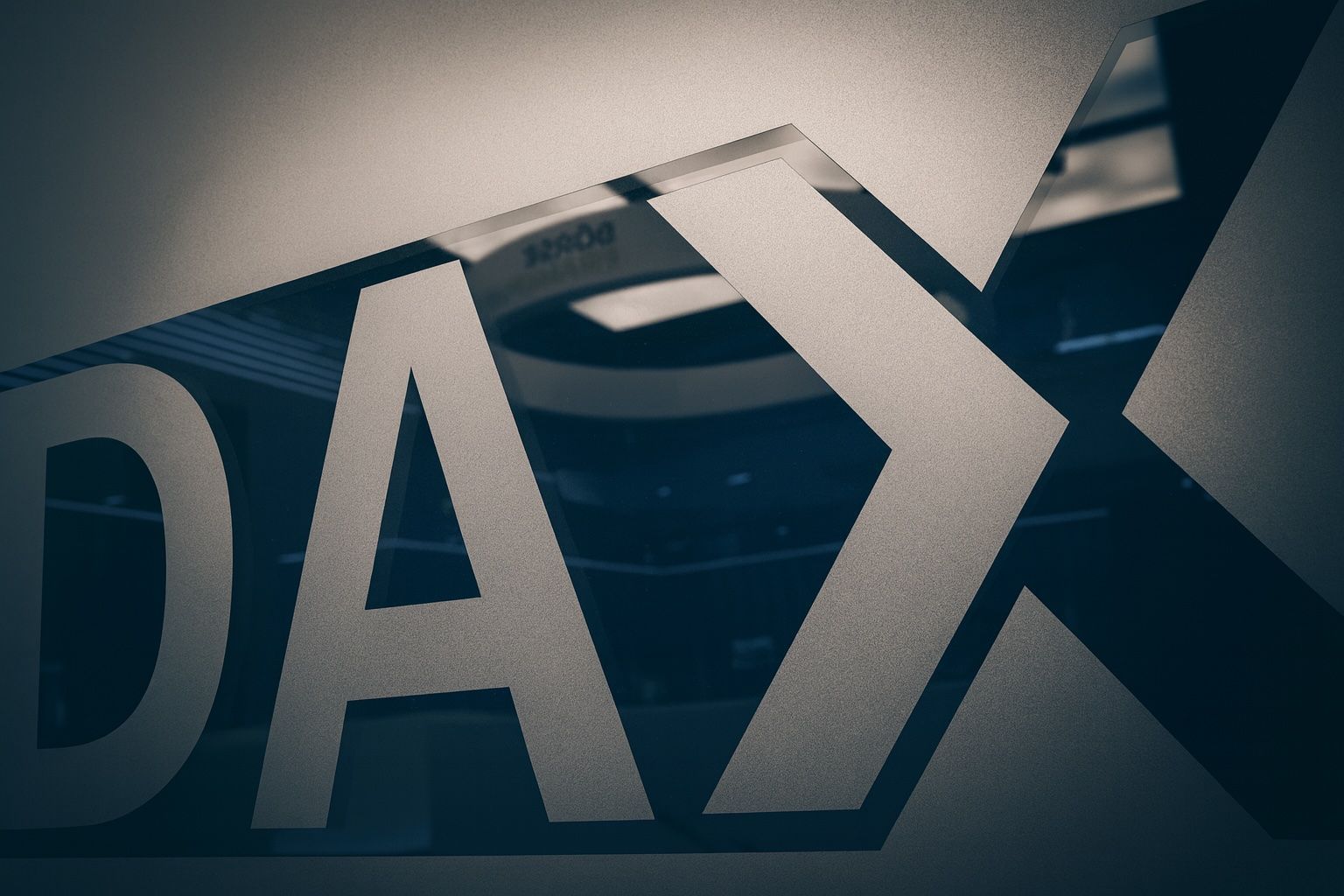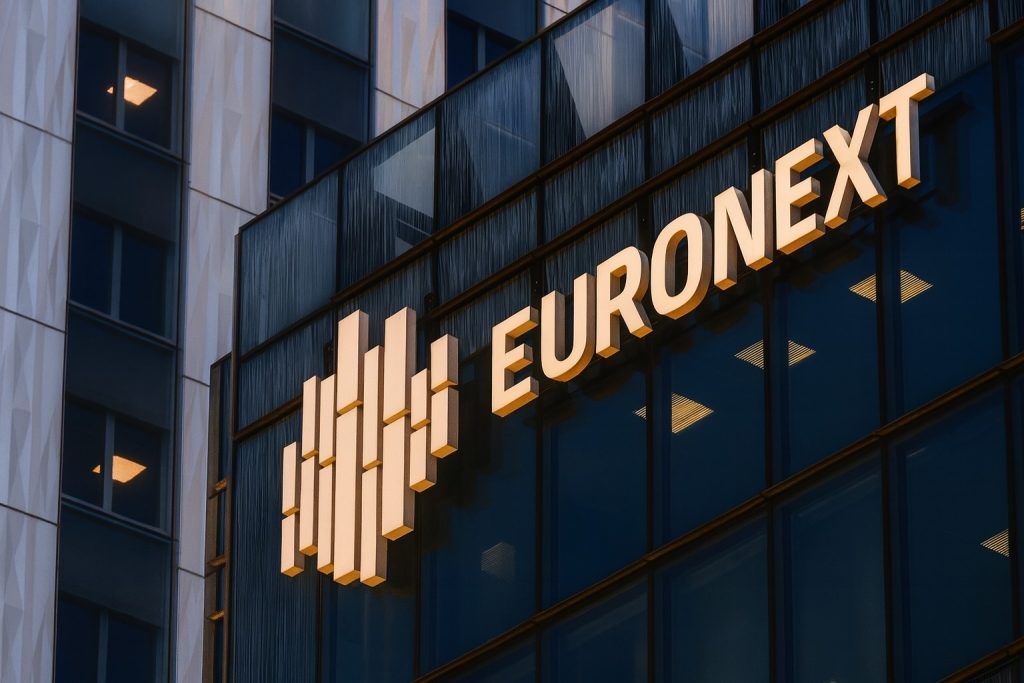- Market Rebound: Germany’s DAX index jumped over 1% on Monday (Nov 3) to around 24,200 intraday, led by strong rallies in automobile and banking shares [1] [2]. This follows a 0.68% drop last Friday when construction, insurance, and telecom stocks dragged the market down [3].
- Seasonal Optimism: Analysts cite classic year-end seasonal tailwinds for stocks – historically a strong Q4 pattern – as a key driver of optimism. “Year-end rallies are indeed common,” notes Deutsche Börse, with October-November typically yielding positive returns on average [4] [5].
- Expert Forecasts: Several market experts predict further gains. Bernd Meyer of Berenberg expects a “relatively strong year-end” for equities given Fed rate cuts, solid data, and earnings beats [6]. Technical chartists even say a DAX breakout is near: if stability holds, “25,000 points is quickly possible”, according to analyst Christoph Geyer [7].
- Easing Headwinds: Global risks that weighed on sentiment are abating. A recent U.S.-China trade truce has eased supply fears – crucial for export-heavy Germany [8] – and the U.S. Federal Reserve’s late-October rate cut has bolstered risk appetite (though further cuts are less certain) [9]. Meanwhile, Germany’s latest manufacturing PMI ticked up to 49.6, still contracting but slightly improved [10].
- Caution Remains: Not everyone is euphoric. Some strategists warn about over-exuberance in high-flying tech/AI stocks, pointing to bubble risks. “Critics warn of an investment bubble… the advent of AI will bring disruptive effects, separating winners from losers,” cautions Ulrich Stephan of Deutsche Bank [11]. Additionally, Germany’s economy remains fragile – “persistently disappointing” data have made investors skeptical that the new government can revive growth sustainably [12].
Recent Market Moves: From Dip to Rally
After a soft close to October, German equities have quickly flipped the script in early November. Last Friday, the DAX index fell 0.68% to around 23,958 [13] as several sectors slumped. Losses in construction, insurance, and telecom stocks led the decline [14], pulling the blue-chip index down and ending the week on a cautious note. Defensives like consumer staples offered little relief, and even stalwart names such as Allianz and Adidas slid over 2% [15]. One bright spot was industrial firm Kion Group, which surged nearly 7% to a three-year high amid positive earnings, but overall declining stocks far outnumbered advancers on the Frankfurt exchange [16] [17].
By Monday morning (Nov 3), however, sentiment had dramatically improved. The DAX opened just above 24,000 points [18] and continued climbing through midday, up roughly 1.1% to 24,227 in early afternoon trade [19]. This robust intraday rally was fueled by a rebound in cyclical sectors that had lagged. Investors seemed eager to buy the dip from last week, heartened by fresh signals of easing global risks and supportive seasonal trends. The result was a broad-based advance that put the index back within sight of its record highs, erasing the prior session’s losses and then some.
Year-End Tailwinds Fuel Optimism
A major factor behind the DAX’s reversal is the classic “year-end rally” phenomenon. Seasonal patterns favor equity gains late in the year, and 2025 appears to be following suit. “Seasonal tailwinds should not be underestimated either,” says Bernd Meyer, Chief Investment Strategist at Berenberg, noting that historically the final quarter (especially October-November) delivers strong returns for both European and U.S. stocks [20]. With the calendar turning to November, many investors anticipate this positive seasonal bias to kick in – a self-fulfilling optimism that can drive markets higher.
Multiple analysts are also pointing to a confluence of supportive factors aligning for equities right now. According to Meyer, the macroeconomic backdrop is turning more stock-friendly: “The combination of Fed rate cuts, solid economic data, and positive corporate earnings surprises should result in a relatively strong year-end for stocks,” he explains [21]. Indeed, the U.S. Federal Reserve delivered a rate cut at its late-October meeting – an expected 0.25% easing – which buoyed global markets. While Fed Chair Jerome Powell signaled that further cuts are not guaranteed in the immediate term, the shift toward easier monetary policy has clearly improved risk appetite [22]. Lower interest rates tend to support stock valuations by reducing borrowing costs and making bonds less attractive relative to equities.
Meanwhile, trade tensions have cooled, removing another overhang for Germany’s export-driven companies. Ulf Krauss of Helaba points out that the recent meeting between U.S. President Donald Trump and China’s President Xi Jinping appears to have calmed fears of escalating tariffs. “Trade tensions appear to have eased somewhat following the meeting between the two most powerful men in the world,” Krauss observes, noting that a truce in the dispute – including promises to resolve critical issues like the supply of rare earth materials – is “particularly important” for Western industries [23]. This de-escalation of the trade war narrative is a welcome relief for German automakers and manufacturers, which rely heavily on global supply chains and Chinese demand.
Robust corporate earnings have further bolstered investor confidence. Germany’s earnings season has seen many firms beat expectations, and overall profit growth remains strong. “Investor sentiment is supported by strong corporate earnings – and these are currently running at full speed,” notes Ulrich Stephan, Chief Investment Strategist at Deutsche Bank [24]. Healthy earnings mean companies are fundamentally coping well, which underpins the stock rally with solid data. Many DAX constituents from industrial giants to financial institutions have reported solid third-quarter results, giving fundamental credence to the market’s upward bias.
In summary, analysts believe the stars are aligning for a continuation of the rally. Several tailwinds are in play, including:
- Central Bank Easing: Major central banks have turned more dovish. The Fed’s recent rate cut (and prospects of another in coming months) creates a more accommodative environment for stocks [25] [26]. The European Central Bank is also maintaining supportive policy amid subdued inflation.
- Positive Seasonality: The October-to-December period often sees equity strength. Historical data show above-average returns in late Q4 for both Europe and the U.S., fostering expectations of a “Santa Claus rally” in coming weeks [27].
- Easing Trade Fears: U.S.-China trade relations have improved after high-level talks, reducing the risk of new tariffs. Supply bottlenecks are starting to unclog – for example, hopes that the seized Dutch chipmaker Nexperia will resume shipments from China have lifted European auto sector sentiment [28].
- Strong Earnings Momentum: Corporate profits continue to impress. Many DAX companies have delivered earnings surprises and resilient margins despite economic headwinds, supporting higher stock prices [29].
This confluence of factors has created a cautiously optimistic mood in Frankfurt. As long as these tailwinds persist, investors believe the DAX has a solid fundamental and seasonal foundation to push higher into the end of the year.
Banks and Autos Lead the Rally
The latest rally has been driven in large part by cyclical sectors – especially automobiles and financials – which are rebounding on hopes of improving conditions. On Monday, auto manufacturers and suppliers saw outsized gains. Mercedes-Benz shares jumped about 3.2%, and Volkswagen climbed over 2% [30]. Tire and auto tech firm Continental and luxury carmaker Porsche Automobil Holding each rose roughly 1.5–2% as well [31]. The auto sector was buoyed by positive news on the microchip supply front: reports emerged that the U.S. government may allow Nexperia – a Netherlands-based chipmaker whose Chinese-owned unit was blocked from exporting – to resume shipments, potentially easing the semiconductor shortage that has hampered European car production [32]. This prospect of relief in the supply chain sent auto stocks broadly higher across Europe on Monday, with France’s Renault and auto supplier Valeo also rallying on the news [33].
Banks and financial stocks likewise contributed to the surge. Deutsche Bank and Commerzbank, Germany’s two major lenders, each saw their stock prices climb around 1.5–2% amid the risk-on atmosphere [34]. Insurance heavyweight Allianz was up about 1.5% as well. A stabilizing or falling interest rate outlook can be a mixed blessing for banks, but in this case investors focused on the positives – reduced economic uncertainty and the trade truce – which could lift loan demand and reduce credit risks for lenders. The banking sector was also catching up from prior weakness; it had lagged in October amid global bank jitters, so the easing of U.S. banking sector concerns (following solid U.S. bank earnings and calm in credit markets) gave German financials a relief rally [35] [36].
Other notable movers included Siemens Energy, which was the single biggest gainer on the DAX Monday, spiking nearly 4.5% [37]. The energy engineering firm’s jump came as investors reacted to a broker upgrade citing its exposure to AI-driven efficiency gains (Siemens Energy has been touted as an “AI beneficiary” by some analysts [38]). Rheinmetall, a defense and auto-parts conglomerate, rose over 2% [39] to new all-time highs, continuing its strong momentum as military spending in Europe remains elevated. Meanwhile, tech-oriented names like SAP (enterprise software) and Infineon Technologies (semiconductors) were also “notably higher” on the day [40], riding the broad market wave despite recent volatility in the tech space.
It wasn’t all green on the screen, however. A few defensive and healthcare names lagged as investors rotated into riskier assets. Real estate giant Vonovia, dialysis provider Fresenius Medical Care, and biotech firm Qiagen were slightly in the red (down roughly 0.5–1% each) on Monday [41]. These declines likely reflect profit-taking and sector rotation: money flowed out of safer plays and into cyclicals that offer more upside in a rising market. Still, the overwhelming majority of DAX components advanced, and market breadth was firmly positive – an encouraging sign that this rally has broad support rather than just a few stock-specific jumps.
Economic & Policy Backdrop
The fundamental backdrop for German stocks is mixed, which helps explain both the late-October dip and the early-November optimism. On one hand, Germany’s domestic economy has been soft in 2025. Manufacturing and export-oriented industries have struggled with high energy costs and slower global demand. The latest data show manufacturing activity is just shy of expansion: the HCOB Germany Manufacturing PMI for October came in at 49.6 (where readings below 50 indicate contraction), essentially flat compared to 49.5 in September [42]. This confirms that factory output is still shrinking slightly, although the pace has stabilized. Other indicators, like industrial production and business sentiment surveys, have similarly been lackluster through the summer and fall. Additionally, Germany experienced several quarters of near-zero GDP growth, flirting with a technical recession. These “persistently disappointing economic data” have made some investors question whether any new government policies can truly kickstart growth again [43].
Indeed, Germany’s political landscape is a factor in market sentiment. A new coalition government took the helm in Berlin after the recent federal election, promising to revitalize Europe’s largest economy. However, skepticism remains high on the trading floor. “Apparently, some investors are skeptical – due to persistently disappointing economic data – about whether the new government can truly return the German economy to sustainable growth,” comments Andreas Hürkamp, a strategist at Commerzbank [44]. Until hard evidence of an economic turnaround emerges (for instance, a sustained uptick in GDP or industrial orders), the market’s enthusiasm could be capped by growth concerns. The DAX’s underperformance relative to Wall Street this year reflects this caution: unlike the S&P 500 and Nasdaq, which notched record highs recently, the DAX has been “moving sideways since May” amid Germany’s economic malaise [45].
On the other hand, external forces have turned more favorable for Germany as we enter the year’s final stretch. The European economy broadly is benefiting from easing inflation and the prospect of central bank support. Eurozone price pressures have cooled from their peak, giving the European Central Bank (ECB) room to hold interest rates steady after an aggressive hiking cycle. Meanwhile, the U.S. Federal Reserve’s shift is particularly impactful: the Fed’s quarter-point rate cut in late October – its first cut after a long string of rate hikes – was a strong signal that the tightening phase is over. Fed officials indicated that this cut may be the last for now, causing traders to dial back expectations of further immediate easing [46] [47]. Still, markets are pricing in a decent chance of another Fed cut by December (around 70% odds) [48]. For European stocks, the end of U.S. monetary tightening is a relief, as it eases upward pressure on global financing costs. German bond yields have pulled back from highs, and a more stable interest-rate outlook helps support equity valuations and dividend-paying sectors like utilities and real estate (though those lagged in Monday’s risk rally).
Crucially, the geopolitical climate has improved compared to a few months ago. The tentative truce in the U.S.-China trade war stands out. After years of on-and-off tariff battles that especially hurt German exporters (autos, machinery, chemicals), Washington and Beijing have toned down the rhetoric. There’s talk of rolling back some punitive tariffs and resolving strategic disputes over critical exports. For example, the rare-earth minerals supply issue – vital for high-tech and defense manufacturing – saw progress, with leaders agreeing in principle to ensure Western industries aren’t cut off [49]. Additionally, geopolitical flashpoints like the conflict in Eastern Europe and tensions in the Middle East have not escalated further in late 2025, reducing tail risk. It’s worth noting that safe-haven assets like gold have eased back as these risks abate; gold prices dipped below $4,000/oz late last week before recovering slightly to $4,010 as traders balanced reduced safe-haven demand against uncertain rate outlooks [50]. Overall, calmer global waters reduce the “market fog” that had clouded sentiment and allow investors to refocus on fundamentals.
Risks and Caution Signs
Despite the bullish momentum, market veterans urge caution – this rally comes with its share of risks to monitor. Perhaps the biggest red flag being discussed is the fear of an asset bubble forming in certain segments of the market. The spectacular run-up in technology and artificial intelligence (AI) related stocks throughout 2025 has drawn comparisons to past manias. Ulrich Stephan of Deutsche Bank warns that alongside genuine enthusiasm for AI’s potential, “skepticism about a potential overheating is growing”. He notes that some critics are warning of an investment bubble and questioning whether lofty tech valuations can be justified by real earnings and resource availability [51]. “As with all groundbreaking innovations, the advent of AI will also bring disruptive effects, separating winners from losers,” Stephan says [52]. The implication is that investors need to be selective – not every company riding the AI hype will thrive in the long run. A sharp correction in an “AI bubble” sector could quickly spill over to broad indices like the DAX, given how global market sentiment is intertwined.
Another area of concern is the underlying economy. Germany’s recovery is still fragile, and a few upbeat market sessions don’t change that overnight. Industrial slowdowns in China or Europe, surprise jumps in energy prices, or a resurgence of inflation could all undermine the bullish case. The modest uptick in manufacturing PMI to 49.6 is still below the growth threshold [53], and other forward-looking indicators (like new export orders) remain weak. If upcoming data – such as German factory orders or GDP figures – disappoint, investors might reassess their optimism. Commerzbank’s Andreas Hürkamp highlights this skepticism about the economy, tied to doubts about the new government’s ability to implement growth-friendly reforms [54]. In short, without an improving economy to validate rising stock prices, the DAX’s rally could lose steam.
Policy uncertainty could also inject volatility. While the consensus is that central banks will be gentle from here, that could change if inflation surprises to the upside. The ECB has paused hikes, but it’s not yet talking about cuts, and any hint of tightening could spook markets. In the U.S., if economic data come in too hot, the Fed might hold off on that potential December rate cut – or worse, signal more hikes – which would likely jolt global stocks. At the same time, if growth slows too much, fears of recession could re-emerge. The tightrope central banks walk means policy signals will be scrutinized: as one analyst put it, markets are “in the balance” regarding whether the Bank of England and others might cut rates in the near term [55]. Sudden shifts in these odds can cause swings in interest-rate-sensitive sectors and overall risk sentiment.
Finally, geopolitical and trade issues bear watching despite recent improvements. The current calm in the U.S.-China relationship could prove temporary – any breakdown in negotiations or new tariff threats would rapidly sour the market mood, much as we saw during past flare-ups. Europe also faces internal challenges, from handling the energy crisis to navigating political changes (e.g. upcoming EU elections and budget debates). Unforeseen shocks, such as a major corporate scandal or a resurgence of global conflict, are ever-present tail risks that could knock the DAX off course. As one market commentator noted after observing the tentative bounce this week: “With geopolitical tensions cooling and monetary policy uncertainty lingering, this mini rally looks cautious rather than convincing” [56]. In other words, confidence is rising but remains fragile – it would not take a lot of bad news to stir up volatility again.
Outlook: Can the DAX Hit 25,000?
With the DAX hovering around 24,100–24,200 at the start of November, the prospect of reaching the 25,000 milestone is suddenly within sight. That level would mark a psychological threshold and a new all-time high for Germany’s flagship index. Experts are divided on when and if it will happen soon, but bullish voices are increasingly confident. “We are currently in the best statistical position of the year,” says technical analyst Christoph Geyer, arguing that the market’s seasonal strength and recent consolidation put it primed for a breakout [57]. Every prior attempt by the DAX to decisively break higher or lower earlier in the year had fizzled out, keeping the index range-bound. But Geyer notes that the situation has “changed significantly” now – the stars may be aligning for an upside breakout. If there are no new disruptions (for example, no sudden trade tariff surprises or geopolitical shocks), he believes a surge past the next “major round number” of 25,000 could happen quickly [58]. Such a move would be roughly a 3–4% gain from current levels – a feasible jump in a single strong week or a few good sessions.
Fundamental strategists echo a cautiously optimistic outlook. Bernd Meyer expects the supportive mix of central bank easing, decent economic news, and earnings growth to continue driving stocks upward into December [59]. Should the U.S. Federal Reserve follow through with another rate cut or even just maintain a dovish tone, it could add fuel to the rally. Additionally, investor positioning is not overly bullish yet – there’s cash on the sidelines that could flow into equities. “Market positioning…is not excessively high, which makes us optimistic for equities,” Meyer adds [60]. In plainer terms, many institutional investors have been underweight stocks given this year’s uncertainties; as they gain confidence and increase exposure, that incremental buying could propel indexes higher.
It’s worth noting that globally, stock markets are in an upswing: the pan-European STOXX 600 index is near record territory and U.S. indices like the S&P 500 and Nasdaq have recently notched fresh highs [61]. A rising tide lifts all boats, and Germany could benefit from international capital flows if global investors seek to diversify into relatively undervalued European stocks. The DAX, having lagged the U.S. market for most of 2025, might look attractive if investors believe Europe is the next leg of the bull run. Any positive surprises – say a stronger German GDP report or a resolution to a major industrial dispute – would further bolster the case for DAX 25,000 and beyond.
That said, nobody is taking it for granted that DAX 25K will be a straight shot. The journey is likely to see bumps, and the index could consolidate or even pull back before attempting that milestone. Valuations on some DAX companies are not cheap, and the index’s heavy weighting in cyclical sectors means it is sensitive to economic news. Traders will be closely watching upcoming catalysts: central bank meetings, economic data releases (like U.S. jobs reports and German industrial output), and any hints of how the holiday shopping season is shaping up. These will all feed into the narrative of whether the rally has real legs.
In conclusion, the mood in Frankfurt has palpably improved as November kicks off. The DAX’s surge this week – powered by autos, banks, and broad optimism – indicates that the long-awaited year-end rally may be underway. “Year-end rallies are indeed common,” as Deutsche Börse analysts dryly note [62], and this year’s edition has a strong script: fading headwinds, supportive policies, and investors eager for gains. If the current tailwinds hold, Germany’s market could very well break into record-high territory. 25,000 on the DAX is no longer a far-fetched target, but rather a real possibility on the near horizon [63]. Still, prudent investors will keep an eye on those lurking risks – from an AI bubble to economic hiccups – that could cloud the skies again. For now, though, the bulls have the upper hand, and the final chapters of 2025 could deliver a memorable finish for German stocks.
Sources:
- Investing.com – Germany shares lower at close of trade; DAX down 0.68% (Oct 31, 2025) [64] [65]
- MarketScreener/Deutsche Börse – Seasonal Tailwinds: Weekly Outlook for Frankfurt Stock Exchange (Nov 3, 2025) [66] [67] [68]
- RTT News via Myfxbook – DAX Rises Over 1% as Banks, Auto Stocks Rally (Nov 3, 2025) [69] [70] [71]
- Sharecast News – Europe midday: Auto makers in focus on Nexperia report (Nov 3, 2025) [72] [73]
- Reuters – European stocks close at record high on tech rally, hopes for Fed rate cut (Oct 2, 2025) [74] [75] (contextual)
- Reuters/Nasdaq – RTT News: DAX up on easing US bank concerns, US-China relations (Oct 20, 2025) [76] [77] (contextual)
References
1. www.myfxbook.com, 2. www.myfxbook.com, 3. in.investing.com, 4. www.marketscreener.com, 5. www.marketscreener.com, 6. www.marketscreener.com, 7. www.marketscreener.com, 8. www.marketscreener.com, 9. www.lse.co.uk, 10. www.myfxbook.com, 11. www.marketscreener.com, 12. www.marketscreener.com, 13. www.marketscreener.com, 14. in.investing.com, 15. in.investing.com, 16. in.investing.com, 17. in.investing.com, 18. www.marketscreener.com, 19. www.myfxbook.com, 20. www.marketscreener.com, 21. www.marketscreener.com, 22. www.lse.co.uk, 23. www.marketscreener.com, 24. www.marketscreener.com, 25. www.marketscreener.com, 26. www.lse.co.uk, 27. www.marketscreener.com, 28. www.lse.co.uk, 29. www.marketscreener.com, 30. www.myfxbook.com, 31. www.myfxbook.com, 32. www.lse.co.uk, 33. www.lse.co.uk, 34. www.myfxbook.com, 35. www.nasdaq.com, 36. www.nasdaq.com, 37. www.myfxbook.com, 38. www.marketscreener.com, 39. www.myfxbook.com, 40. www.myfxbook.com, 41. www.myfxbook.com, 42. www.myfxbook.com, 43. www.marketscreener.com, 44. www.marketscreener.com, 45. www.marketscreener.com, 46. www.lse.co.uk, 47. www.lse.co.uk, 48. www.lse.co.uk, 49. www.marketscreener.com, 50. www.lse.co.uk, 51. www.marketscreener.com, 52. www.marketscreener.com, 53. www.myfxbook.com, 54. www.marketscreener.com, 55. www.lse.co.uk, 56. www.lse.co.uk, 57. www.marketscreener.com, 58. www.marketscreener.com, 59. www.marketscreener.com, 60. www.marketscreener.com, 61. www.marketscreener.com, 62. www.marketscreener.com, 63. www.marketscreener.com, 64. in.investing.com, 65. in.investing.com, 66. www.marketscreener.com, 67. www.marketscreener.com, 68. www.marketscreener.com, 69. www.myfxbook.com, 70. www.myfxbook.com, 71. www.myfxbook.com, 72. www.lse.co.uk, 73. www.lse.co.uk, 74. www.reuters.com, 75. www.reuters.com, 76. www.nasdaq.com, 77. www.nasdaq.com





